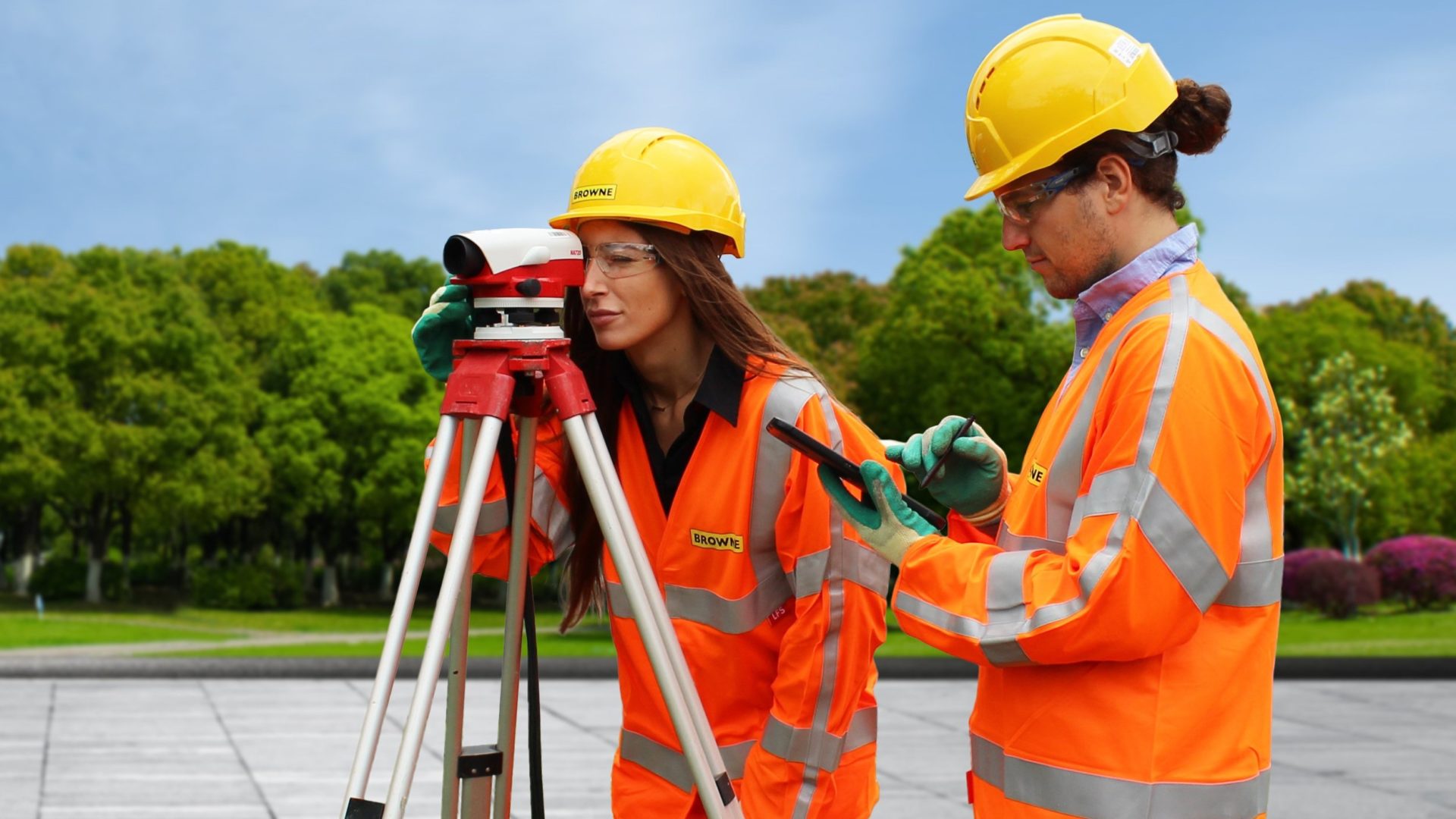
Browne was a finalist in the Contractor of the Year category at the Digital Construction Awards 2023 for integrating digitally-enabled work practices throughout the organisation. Denise Chevin caught up with Rob Gauldie, who is driving Browne’s digital transformation, to find out more.
Browne specialises in water sector infrastructure for water companies, predominantly in the South East of England. It is part of the Renew Group. Last year it turned over £95m, mostly from installing and repairing water and sewer infrastructure.
Browne’s programme of integrating project management information from across the supply chain has improved efficiency by allowing greater visibility of project progress and pre-planning of the works, explains Gauldie, head of project management and digital transformation at Browne.
What has made the transformation possible is the nature of the work Browne is carrying out, which involves installing and repairing pipework for clean and waste water on both a planned and reactive basis.

“We’re taking people with civil engineering degrees and training them up as digital specialists. That gives us the edge.”
Gauldie says: “Our work is about as close to managed production as you can get in civil engineering infrastructure. We’re doing quite repetitive stuff, which really lends itself to digitisation. You can bring efficiencies to that: even if they are small, they are repeatable. With bespoke projects that are different every time, it is more difficult.
“The unique thing we are doing is taking people with civil engineering degrees and training them up as digital specialists. That gives us the edge in terms of sector knowledge, and being able to deliver for the business,” he adds.
BIMplus: Tell us about the digital transformation.
Rob Gauldie: We recognised challenges within our approach to digital innovation two or three years ago. We have a lot of bright people in the business who tend to innovate in the environment around them. So, if you looked across the business, there were lots of little tools that worked quite well for the people who built them, but were generally built on spreadsheets. And we wanted to capture that, but at scale.
We didn’t want to fall into the trap either of bolting systems together in an inelegant way – that is with two systems running the same set of data but without talking to each other.
Our approach has been to take all of our operational delivery data and put it into a single data warehouse. Which means that all the data to do with production, contract quality, permitting, training, anything you can imagine, is all in one place. That includes anything from real-time day-to-day photo records of activities, showing where each member of the site team is and what they are building, to people’s training records.
And you get synergies. So, for instance, we have a module that allows people to fill in permits to dig, for instance. But from that, you can access the individual’s training records, so you can check that this person is compliant to do the work.

Is this a proprietary system?
No, our in-house development team built it on the Microsoft Power platform.
There are about 140 users across the business. Those in the field run the whole suite of apps on their tablets.
Staff might have access to different parts of the system. Everyone has access to their own training records, which update live. Then senior managers like me would have access to more information, like how compliant the subcontractors working on site are. For example, if there is a toolbox talk, the person receiving the training will sign on a tablet to say they have listened to it. That then goes on to their training record.
We are quite invested in the Microsoft Power platform. I think it is the way a lot of small to medium-sized construction firms need to go, in terms of getting value from their data. There are a lot of companies buying different software-as-a-service products. They are usually quite good for what they do, but it just means you have got another data silo somewhere.
What do you consider to be the main benefits of what you have done?
Using this technology, and by having our data in one place, we are able to deliver more with fewer people, and with less risk. As an example, we do 60,000 pieces of planned and reactive maintenance work for one company alone each year. We have collated eight years’ worth of data from this work stream that we can learn from. We can look at this data and use it to help plan how many teams of people we might need at any given time, for a given weather condition. This helps us keep our resources at the right size to meet customer expectations and our service level agreements.
“Our model is to take civil engineering graduates and train them up to develop the software. That is one of the advantages of this low-code platform.”
How are you continuing to develop the platform?
We are adding to it all the time. We have a development team of eight and we are seeing increasing interest in transfer of the technology from our joint venture and sister businesses.
Our model is to take civil engineering graduates and train them up to develop the software. That is one of the advantages of this Microsoft low-code platform. It means you do not necessarily need to have a software engineering background to do this.
One of our graduates built a new app in three weeks that allows people to submit health and safety observations. It is not overly complex, but it is very functional and in wide use across the business.
Do you write most of your software apps on the platform in-house?
We develop our own digital capital, because we can reuse it, and make it bespoke to what we want. But where we need to hook into other software, like Oracle P6, or schedule information, we’ll typically upload it as a file. Once it’s uploaded, all that data from that schedule can be used by other products in the platform. And we can do some transformation on the data, and get some really useable information out of it.
Has this digital adoption involved a transformation in the way the workforce works?
Absolutely. We have gone from a business that three years ago was effectively a greenfield site, digitally, to one that if you walk around the office now, you see these products being used all over the place.
And people have really taken ownership of it. If you buy a product off the shelf, and tell people to use it, it is less well received than if you go to people and say ‘I want to help you do your job, what would help? Come build it with me.’ Then it’s that person’s product, and they own it and look after it, and they make it better. I always say to our developers that these aren’t your products, they belong to the people who use them.
We’re always improving the product, because 140 people are using it every day, saying ‘could we have this feature?’. All of our supply chain use the same platform and we train them how to use it.
What are people doing differently?
I’d say the biggest change so far is a much wider acceptance that we keep our data in one place, so that everyone can use it. It sounds basic, but it is refreshing to see someone who used to keep all their drawings in a folder on their desktop refer to the platform for up-to-date information.

Have you got any metrics of the benefits this approach brings?
One of the apps that feeds into the data warehouse is called Sentinel, which is a digital permitting platform. These are the permits that teams on site fill in to carry out high-risk activities. One of them is a digital permit to break ground. One of the key risks we manage is avoiding hitting other utilities when we excavate. We built the platform that basically guides those on site through a permit, but also links into some of their survey hardware, that they use to effectively scan the road for other utilities.
“When this was first rolled out, there was a fair bit of resistance. But you couldn’t take it off people now.”
We get a daily feed from that system that documents their survey and details about it. And we use that data for coaching. Every week, everyone that uses survey equipment will get a personalised score, and feedback from our SHEQ team. That data is visually presented to the SHEQ team.
It’s very infrequent that we see utility damages if the survey has been done properly.
And that is visible on the permit. So when the supervisor comes to sign the permit and says it’s okay to proceed with work, they can see what surveys have been done. And there’s also a series of risk management controls in place, automatically generated, depending on what infrastructure the job is near to, or the extent of the excavation etc. It is all computerised and managed in such a way that a lot of the things that can go wrong now cannot go wrong.
It is also visible across the business. If there’s critical utility crossings happening next week, the SHEQ team can say ‘we’ve got a high-voltage crossing next week, can we make sure we have someone down at that site to supervise?’. So you can allocate resource to risk.
And all of that together resulted last year in a very significant drop off in the number of damages. Between 2021 and 2022, we had a 60% decrease in service damages, and an 80% decrease in traceable service damages.
Were there any barriers to take up?
When this was first rolled out two and a half years ago, there was a fair bit of resistance. But, mostly, you couldn’t take it off people now. Some of our staff and subcontractors have become product owners – they look after their bit of the platform, and come and ask us to change it, rather than it going the other way.
Don’t miss out on BIM and digital construction news: sign up to receive the BIMplus newsletter.












